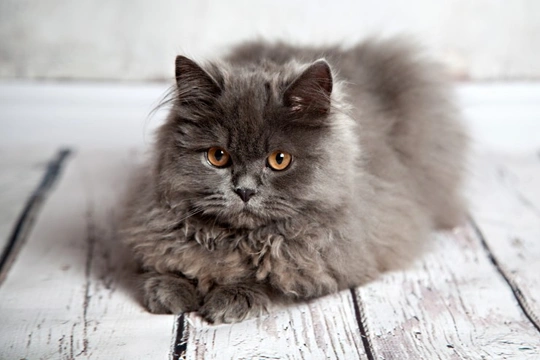
Cerebellar Cortical Abiotrophy in Cats
Fortunately, cerebellar cortical abiotrophy or CAA is known to be a rare condition that can affect cats and other animals. It is a degenerative neurological disorder and when it does occur, the disease appears to affect some breeds more than others. The exact cause of cerebellar cortical abiotrophy in cats, sadly remains unknown and more research would be needed to establish why some cat breeds are more predisposed to developing the condition than others.
The Causes
The problem starts when a cat's neurons which are known as Purkinje cells start to die off. These cells are found in the cerebellum region of a cat's brain and as a result of them dying off, cats lose their coordination because the cells are key to them keeping their balance. In short, without these essential cells, a cat cannot judge distances and spaces which makes it difficult for them to coordinate their movements.
Breeds Most at Risk
As previously mentioned, although the disorder is rare, the breeds that appear to be most at risk of developing this degenerative neurological disease includes the following:
- Persian
- Siamese
- Domestic shorthair - which includes crossbreeds
A Genetic Link
Studies suggest that cerebellar cortical abriotrophy may be an inherited disorder which is transmitted to offspring and that it is an autosomal recessive trait. Affected kittens typically show signs of there being something wrong with them when they are about seven weeks old which is manifested in the way they stand when trying to drink or eat. Kittens often lose their balance and constantly fall over when they are affected by the condition and once the symptoms manifest themselves, they get progressively worse as time passes. Occasionally, when cats suffer from feline hereditary neuroaxonal dystrophy, they can also suffer from cerebellar abiotrophy.
Symptoms to Watch Out For
Cats with the condition typically show signs of there being something wrong by displaying the following symptoms:
- Mild dysmetric ataxia which affects all four legs
- Tremours
- Strange eye movements
- Arching of neck and head which is known as opisthotonus
- Depression
- Changes in normal behaviour
- Cats often become hyperactive
- Stiff, high stepping gait
- Jerky head movements
Diagnosing the Problem
A vet would need to have a cat's full medical history and know how the onset of any symptoms first manifested themselves. However, confirming a diagnosis can prove challenging and sadly, this is usually achieved when a cat has succumbed to their symptoms. In short, a confirmed diagnosis is typically done through a post mortem.
Living with a Cat with the Condition
Research has shown that a cat’s intelligence is not negatively impacted when they suffer from the condition and they can go on to lead full and normal lives. With this said, cats tend to be quite accident prone which means it is best to keep them as indoor pets so they are kept as safe as possible. Sadly, the condition cannot be prevented and it cannot be cured, but with this said, careful and selective breeding does go a long way in reducing the risks of cats being born with CAA.



